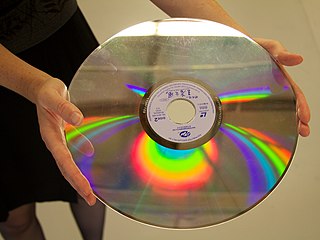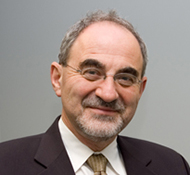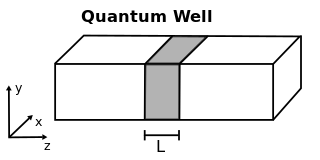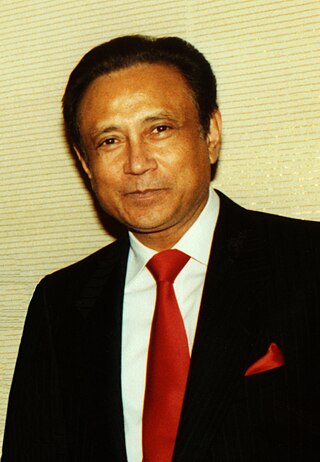Related Research Articles

A laser is a device that emits light through a process of optical amplification based on the stimulated emission of electromagnetic radiation. The word laser is an anacronym that originated as an acronym for light amplification by stimulated emission of radiation. The first laser was built in 1960 by Theodore Maiman at Hughes Research Laboratories, based on theoretical work by Charles H. Townes and Arthur Leonard Schawlow.

The University of Surrey is a public research university in Guildford, Surrey, England. The university received its royal charter in 1966, along with a number of other institutions following recommendations in the Robbins Report. The institution was previously known as Battersea College of Technology and was located in Battersea Park, London. Its roots however, go back to Battersea Polytechnic Institute, founded in 1891 to provide further and higher education in London, including its poorer inhabitants.

The LaserDisc (LD) is a home video format and the first commercial optical disc storage medium, initially licensed, sold and marketed as MCA DiscoVision in the United States in 1978. Its diameter typically spans 30 cm (12 in). Unlike most optical-disc standards, LaserDisc is not fully digital, and instead requires the use of analog video signals.

Eli Yablonovitch is an American physicist and engineer who, along with Sajeev John, founded the field of photonic crystals in 1987. He and his team were the first to create a 3-dimensional structure that exhibited a full photonic bandgap, which has been named Yablonovite. In addition to pioneering photonic crystals, he was the first to recognize that a strained quantum-well laser has a significantly reduced threshold current compared to its unstrained counterpart. This is now employed in the majority of semiconductor lasers fabricated throughout the world. His seminal paper reporting inhibited spontaneous emission in photonic crystals is among the most highly cited papers in physics and engineering.

A quantum well is a potential well with only discrete energy values.
Quantum optics is a branch of atomic, molecular, and optical physics dealing with how individual quanta of light, known as photons, interact with atoms and molecules. It includes the study of the particle-like properties of photons. Photons have been used to test many of the counter-intuitive predictions of quantum mechanics, such as entanglement and teleportation, and are a useful resource for quantum information processing.

Surrey County Cricket Club is a first-class club in county cricket, one of eighteen in the domestic cricket structure of England and Wales. It represents the historic county of Surrey, including areas that now form South London. Teams representing the county are recorded from 1709 onwards; the current club was founded in 1845 and has held first-class status continuously since then. Surrey have played in every top-level domestic cricket competition in England, including every edition of the County Championship.
A quantum dot laser is a semiconductor laser that uses quantum dots as the active laser medium in its light emitting region. Due to the tight confinement of charge carriers in quantum dots, they exhibit an electronic structure similar to atoms. Lasers fabricated from such an active media exhibit device performance that is closer to gas lasers, and avoid some of the negative aspects of device performance associated with traditional semiconductor lasers based on bulk or quantum well active media. Improvements in modulation bandwidth, lasing threshold, relative intensity noise, linewidth enhancement factor and temperature insensitivity have all been observed. The quantum dot active region may also be engineered to operate at different wavelengths by varying dot size and composition. This allows quantum dot lasers to be fabricated to operate at wavelengths previously not possible using semiconductor laser technology. One challenge in the further advances with quantum dot lasers is the presence of multicarrier Auger processes which increases the nonradiative rate upon population inversion. Auger processes are intrinsic to the material but, in contrast to bulk semiconductors, they can be engineered to some degree in quantum dots at the cost of reducing the radiative rate. Another obstacle to the specific goal of electrically-pumped quantum dot lasing is the generally weak conductivity of quantum dot films.
Surrey Satellite Technology Ltd, or SSTL, is a company involved in the manufacture and operation of small satellites. A spin-off company of the University of Surrey, it is presently wholly owned by Airbus Defence and Space.
WPFW is a talk and jazz music community radio station serving the greater Washington, D.C. metropolitan area. It is owned by the Pacifica Foundation, and its studios are located on K Street Northwest. The station’s slogan is "Jazz and Justice."

Mani Lal Bhaumik is an Indian American physicist and an internationally bestselling author, celebrated lecturer, entrepreneur and philanthropist.

An atomic line filter (ALF) is a more effective optical band-pass filter used in the physical sciences for filtering electromagnetic radiation with precision, accuracy, and minimal signal strength loss. Atomic line filters work via the absorption or resonance lines of atomic vapors and so may also be designated an atomic resonance filter (ARF).

Jameel Sadik "Jim" Al-Khalili is an Iraqi-British theoretical physicist, author and broadcaster. He is professor of theoretical physics and chair in the public engagement in science at the University of Surrey. He is a regular broadcaster and presenter of science programmes on BBC radio and television, and a frequent commentator about science in other British media.

Isamu Akasaki was a Japanese engineer and physicist, specializing in the field of semiconductor technology and Nobel Prize laureate, best known for inventing the bright gallium nitride (GaN) p-n junction blue LED in 1989 and subsequently the high-brightness GaN blue LED as well.
Walter Eric Spear FRSE PhD FRS FInstP was a German physicist noted for his pioneering work to help develop large area electronics and thin film displays. He was born in Frankfurt to a Jewish father and a Lutheran mother; by the time he finished his school examinations in 1938 life for Jews and people associated with Jews was becoming difficult. With the support of friends and relatives in Britain, the family were able to move to London, where he arrived in 1938 "with a small suitcase and a large cello".
Alfred ("Alf") Rodney Adams is a British physicist who invented the strained-layer quantum-well laser. Most modern homes will have several of these devices in their homes in all types of electronic equipment.
Eoin P. O’Reilly is an Irish physicist who, as of 2014, was chief scientific officer at the Tyndall Institute, and a professor of physics at University College Cork. In 2014 he was awarded the Rank Prize in Optoelectronics for his pioneering work on strained-layer laser structures.
Shun Lien Chuang was a Taiwanese-American electrical engineer, optical engineer, and physicist. He was a Fellow of the IEEE, OSA, APS and JSPS, and professor at the University of Illinois at Urbana-Champaign.
James J. Coleman is an electrical engineer who worked at Bell Labs, Rockwell International, and the University of Illinois, Urbana. He is best known for his work on semiconductor lasers, materials and devices including strained-layer indium gallium arsenide lasers and selective area epitaxy. Coleman is a Fellow of the IEEE and a member of the US National Academy of Engineering.
References
- 1 2 "A catalyst to our digital world: strained quantum well lasers—Full Case Study". SET squared. Universities of Bath, Bristol, Exeter, Southampton & Surrey. Archived from the original on 3 April 2015. Retrieved 2 April 2015.
- ↑ "The Life Scientific: Alf Adams (BBC Streaming Audio)". BBC streaming audio. Retrieved 2024-09-07.